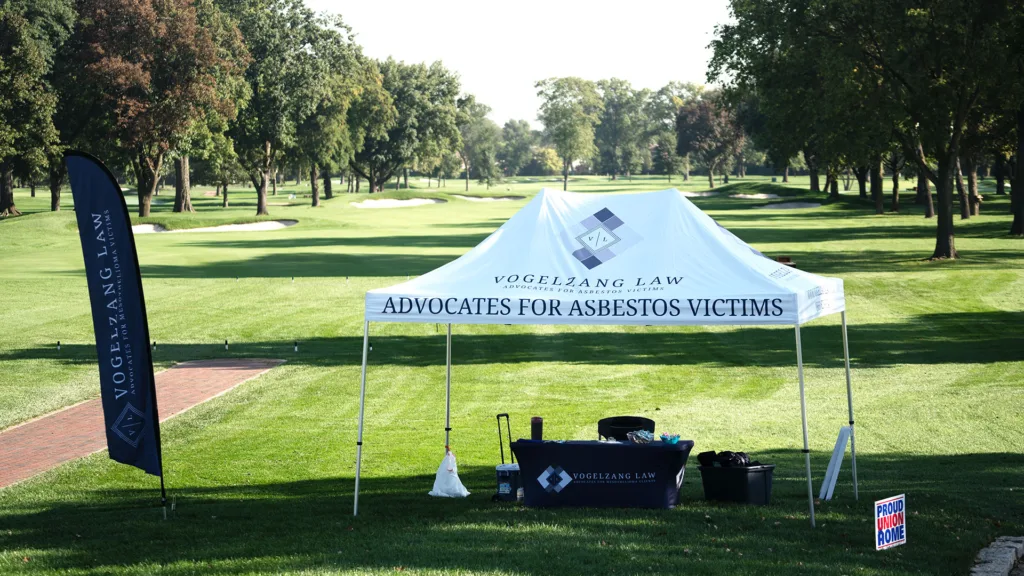After decades, the dangers of asbestos came to light in 1977. That’s when mesothelioma attorneys, who represented asbestos victims, uncovered 6,000 pages known as the Sumner Simpson papers.
If you’ve been diagnosed with an asbestos-related disease, you’ll soon find out why these papers are not only historical but influential in obtaining justice and compensation. Speaking to a Chicago asbestos attorney is also important to ensure you receive the money you need for medical care and improved quality of life.
Whether you’ve been diagnosed with mesothelioma, asbestosis, lung cancer, or a similar disease that is related to asbestos exposure, you need to know your rights and what it takes to file a claim. Talking to an asbestos attorney about your diagnosis and case is vital. Get the legal help and medical care you need right away.
How the Sumner Simpson Papers Surfaced
These papers revealed the coverups of asbestos industry executives – how they concealed the health dangers of asbestos while exposing workers to the harmful mineral. Moreover, many executives knew about these hazards as far back as the 1930s.
In fact, the document collection of the Sumner Simpson papers dates back to that time. These papers were discovered in the offices of Raybestos-Manhattan, Inc. when litigators filed an asbestos-related lawsuit in New Jersey.
Raybestos-Manhattan, Inc. was a maker of auto parts, including clutches, brakes, and similar products. The Sumner Simpson Papers showed that several asbestos companies funded studies on tuberculosis in 1936 through the Saranac Laboratory for Research.
The research confirms a link between cancer and exposure to asbestos. However, during a 1947 meeting, the asbestos companies that financially supported the studies decided that they would not publish the findings or any published content that featured objectionable material.
“Objectionable” was defined as any information referencing an association between cancer and asbestos. During the 1930s and 1940s, Sumner Simpson served as president of Raybestos-Manhattan, Inc. – hence the name for the papers.
The papers also included messages between Mr. Simpson and other executives of asbestos corporations that proved an intent to cover up evidence about asbestos hazards. For instance, in 1935, Mr. Simpson corresponded with Vandiver Brown, a lawyer for Johns-Manville, and stated that the less anyone said about asbestos, the better off “we” or asbestos companies were.
As time progressed, companies that mined or used asbestos in their products continued to cover up the real hazards of asbestos exposure. This conscious disregard is best summed up in a September 12, 1966 document. In the document, the director of purchasing for the Bendix Corporation, E. A. Martin, wrote, “. . . [I]f you’ve enjoyed a good life . . . working with asbestos . . . why not die? There’s got to be some cause.”
However, exposure to the naturally occurring mineral causes the fatal disease mesothelioma, which also reduces a patient’s quality of life. There is no known cure for this illness, which has short survival times. Asbestos is also responsible for the development of lung cancer and asbestosis, a disease that leads to scarring of the lung tissues and respiratory discomfort.
While giant corporations mining the mineral or making asbestos products knew about its hazards, they took affirmative steps to conceal the dangers from the public. Fortunately, the consequences of exposure have come to light.
The Sumner Simpson Papers have served as crucial evidence in several asbestos lawsuits.
What Major Companies Were Involved in the Coverup?
The major companies involved in the coverup were Raybestos-Manhattan and Johns-Manville, as well as a trade publication.
Critical Correspondence and Pieces of Evidence
A variety of correspondence contained within the Sumner Simpson Papers are critical pieces of evidence depicting early knowledge of the asbestos industry executives regarding the health risks associated with exposure to their products. Some very important messages include:
- The letter mentioned above, dated December 1935, from Sumner Simpson to Vandiver Brown, an attorney working for Johns-Manville, regarding suppression of information concerning threats posed by asbestosis.
- The general counsel at Johns-Manville issued a memorandum asking executives to conceal sponsored research on the health effects of inhaling asbestos dust (1941).
- Letters and memoranda giving directives to hide or minimize information on the hazards linked to handling the ill effects of asbestos from workers and the general public.
Impact on Current Asbestos Lawsuits
The Sumner Simpson Papers have had a lasting and deep impact on asbestos litigations. They have been influential in various ways, including:
Evidence of Knowledge and Liability
These papers provide ample evidence that companies producing asbestos were aware of the health risks associated with their products many years before public warnings surfaced. Consequently, this knowledge has become a basis for several litigations, showing that corporations failed to warn their employees or customers about recognized hazards.
Punitive Damages
In several cases, the Sumner Simpson Papers show deliberate concealment of information and are used as grounds for punitive damage awards. Courts have found such behavior especially reprehensible in certain cases, resulting in higher damages. An asbestos lawyer can seek punitive damages when appropriate for asbestos-related injuries.
Extended Statute of Limitations
Some jurisdictions have relied on the Sumner-Simpson Papers to argue for a longer statute of limitations in asbestos cases. Asbestos plaintiffs have claimed that actively concealing information should toll the statute, allowing claims to be brought decades after exposure.
Class Action Lawsuits and Mass Tort Litigation
The documents in these papers are vital for supporting class actions or mass tort litigation against asbestos manufacturers. Lawyers can use the papers to provide a common thread of numerous individual claims, thus making it easier to certify a class action.
Bankruptcy Proceedings and the Establishments of Asbestos Trust Funds
Many asbestos manufacturers have filed for bankruptcy due to the large number of lawsuits they are battling. The Sumner Simpson Papers have also influenced these proceedings by showing that companies knew about risks, thereby allowing the establishment and management of asbestos trust funds.
Public Policy and Regulation
The papers have also affected public policy on asbestos and regulatory decisions. They’ve been used as evidence in congressional hearings and regulatory proceedings for stricter controls. These controls extend to asbestos use and improve worker protection.
Corporate Responsibility
These papers are always mentioned in discussions of corporate ethics as a warning example for future business people. For instance, legal practitioners refer to them when explaining why putting shareholders’ interests before public health is wrong and injurious professionally, financially, and personally.
Historical Context
The Sumner Simpson Papers play an important role in ongoing litigations by providing a historical context about the awareness of asbestos dangers and their impact over time.
Discovery Processes
Because of the papers, plaintiff lawyers can use them in the discovery process to show further proof of the guilt of defendant companies concerning exposure.
The Sumner Simpson Papers are a keystone in the history of asbestos litigation. The legal world of asbestos claims has been shaped by these documents.
It ranges from individual litigations to larger issues of corporate accountability, regulatory policy, and legal precedent. The papers indicate that corporations should be open and honest with their stakeholders and consider the public health ramifications of placing profits before employee welfare.
Despite being dated decades ago, these papers have a bearing on contemporary court cases. Consequently, they are still relevant in the legal field’s attempts to bring justice to victims of asbestos exposure while remediating the past mistakes of asbestos firms.
Precedent Setting
When courts rely on the papers for rulings, they establish precedents followed by other courts regarding the responsibility of the at-fault parties.
Speak to an Asbestos Lawyer for a Free Case Review Today
If you or a loved one has been exposed to asbestos and diagnosed with an asbestos-related disease, you need to speak to an asbestos attorney right away. Obtain a free case review and consultation to learn more about your rights and how your attorney can support your legal claim.



